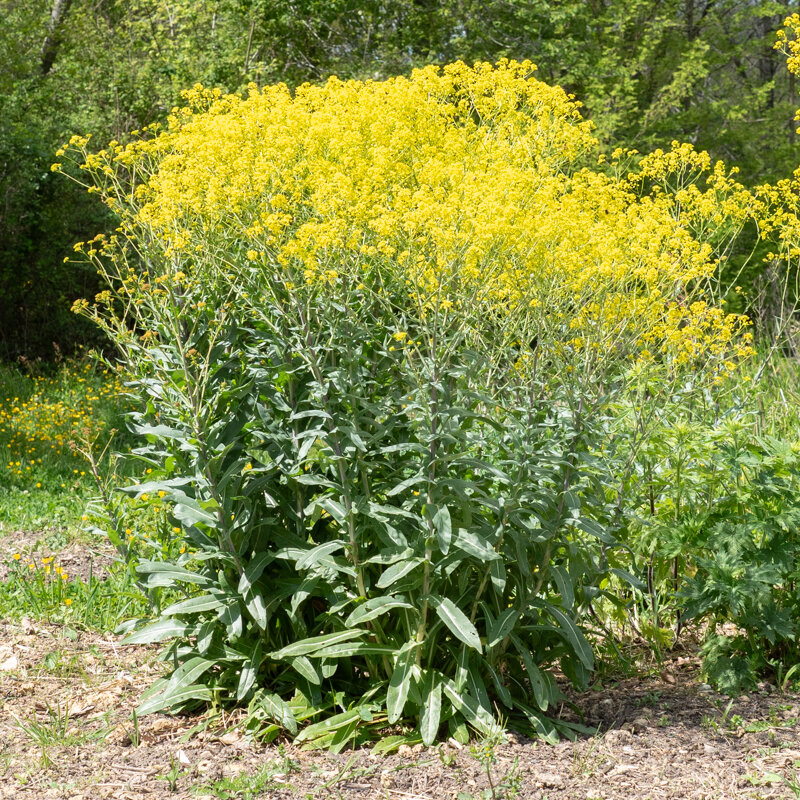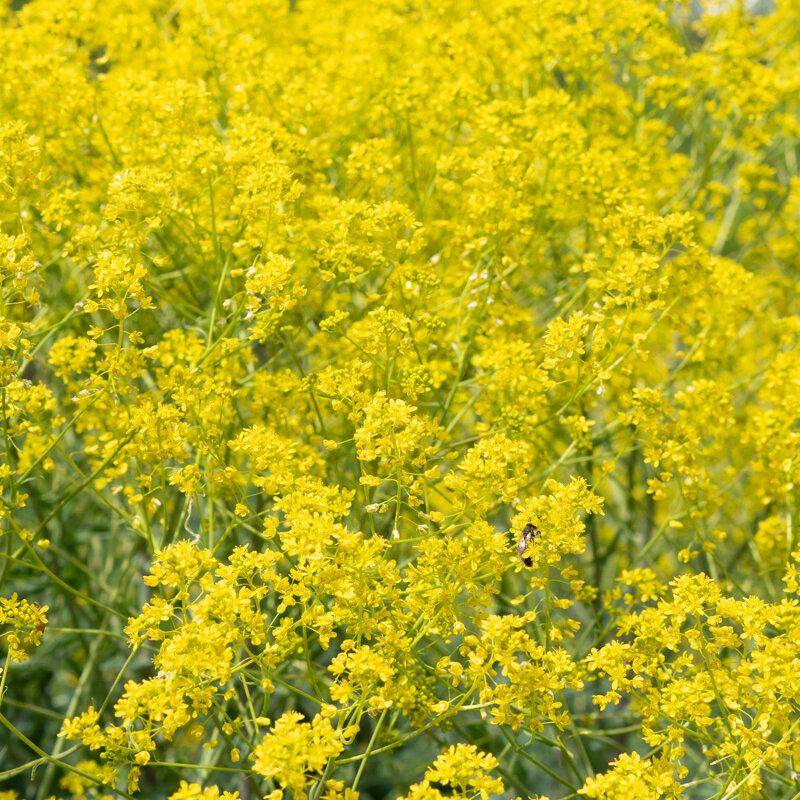Dyer's Woad - Isati
This tinctorial species, also known as "Woad", can grow to over a metre in height and, in its 2nd year, develops a strong stem with numerous small yellow flowers, grouped in large decorative clusters.
in the ground, on the fly, online
Sow in spring or autumn, in loosened soil, broadcast or in rows every 60 cm. Water regularly for the first few weeks. Mulch to retain water. Thin to 60 cm in all directions once rosettes have appeared.
No special maintenance is required. Spontaneous sowing is common.
March, April, May, August, September, October
April, May, June, July
in the ground
sunny
low
clayey, limestone, sandy, gravel
poor, sec, drained
Isatis tinctoria
100 seeds
Yellow
From 60 to 120 cm
Eurasia
1753
Species plantarum
Carl Von Linné
The first traces of the use of dyer's woad by man date back to prehistoric times, and the species was subsequently cultivated in various parts of Europe in the Middle Ages to produce an indigo blue dye from the maceration of its leaves. Isatis tinctoria's antiseptic, antibacterial and anti-inflammatory properties have been known since Greco-Latin antiquity. The plant is still used in traditional Chinese medicine to treat minor wounds.










